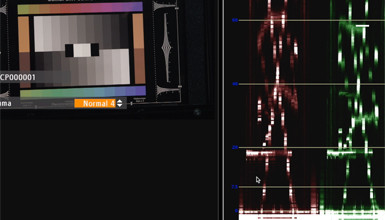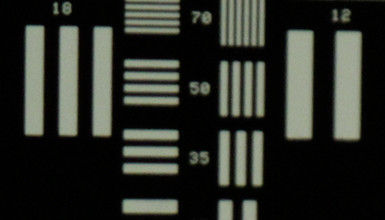Raid - RAID (redundant array of independent disks; originally redundant array of inexpensive disks) is a way of storing the same data in different places (thus, redundantly) on multiple hard disks. By placing data on multiple disks, I/O (input/output) operations can overlap in a balanced way, improving performance. Since multiple disks increases the mean time between failures (MTBF), storing data redundantly also increases fault tolerance.
Bit (short for binary digit) is the smallest unit of data in a computer. A bit has a single binary value, either 0 or 1. Although computers usually provide instructions that can test and manipulate bits, they generally are designed to store data and execute instructions in bit multiples called bytes. In computer systems, there are eight bits in a byte.
1 Byte = 8 bits
1 Kilobyte = 1024 Bytes = 8192 bits
1 Megabyte = 1024 Kilobytes = 1048576 Bytes = 8388608 bits
1 Gigabyte = 1024 Megabytes = 1048576 Kilobytes = 8388608 Bytes = 67108864 bits
LTO - short for Linear Tape Open, a technology that was developed jointly by HP, IBM and Certance (Seagate) to provide a clear and viable choice in an increasingly complex array of tape storage options. LTO technology is an "open format" technology, which means that users will have multiple sources of product and media, and the open nature of LTO technology also provides a means of enabling compatibility between different vendors' offerings.
Resolution - The display resolution of a digital television or computer display typically refers to the number of distinct pixels in each dimension that can be displayed. It can be an ambiguous term especially as the displayed resolution is controlled by all different factors in cathode ray tube (CRT) and flat panel or projection displays using fixed picture-element (pixel) arrays.
Raster - The horizontal lines (scan lines) displayed on a TV or computer monitor. This is the origin of the term "raster graphics," which is the major category that all bitmapped images and video frames fall into (GIF, JPEG, MPEG, etc.)
Color space - A three-dimensional coordinate system, where coordinates in that system represent colors.
Video compression - reducing the quantity of data used to represent video images.
Codec - device or program capable of encoding and/or decoding a digital data stream or signal.
Rec. 601 or BT.601 or its former name, CCIR 601, is a standard published by the CCIR (now ITU-R) for encoding interlaced analogue video signals in digital form. It includes methods of encoding 525 line 60 Hz and 625-line 50 Hz signals, both with 720 luminance samples and 360 chrominance samples per line. The color encoding system is known as YUV 4:2:2, that being the ratio of Y:Cb:Cr samples (luminance data:blue chroma data:red chroma data).
Rec. 709 or BT.709 - standardizes the format of High-definition television.
MPEG-2 - a standard that combines lossy video compression and lossy audio compression (audio data compression) methods which permit storage and transmission of movies using currently available storage media and transmission bandwidth.
MPEG-4 is a collection of methods defining compression of audio and visual (AV) digital data.
Uses of MPEG-4 include compression of AV data for web (streaming media) and CD distribution, voice (telephone, videophone) and broadcast television applications.
MPEG-4 absorbs many of the features of MPEG-1 and MPEG-2 and other related standards, adding new features such as (extended) VRML support for 3D rendering, object-oriented composite files (including audio, video and VRML objects), support for externally-specified Digital Rights Management and various types of interactivity. AAC (Advanced Audio Codec) was standardized as an adjunct to MPEG-2 before MPEG-4 was issued.
Encoding - process of transforming information from one format into another
Transcoding - direct digital-to-digital conversion from one (usually lossy) codec to another. The main purpose is to allow media in one format to be played back on a player that does not support that format; the main problem is that it degrades quality by introducing further compression artifacts.
The aspect ratio of an image is its width divided by its height.
Two common videographic aspect ratios are 4:3 (1.33:1), universal for standard-definition video formats, and 16:9 (1.78:1), universal to high-definition television
Digital bandwidth - capacity for a given system to transfer data over a connection. It is measured as a bit rate expressed in bits/s or multiples of it (kb/s Mb/s etc.).
Chroma subsampling - practice of encoding images by implementing less resolution for chroma information than for luma information. It is used in many video encoding schemes -- both analog and digital -- and also in JPEG encoding

Gamma - name of a nonlinear operation used to code and decode luminance values in video or still image systems.
ATSC Standards - Digital television format that will have replaced the analog NTSC television system by February 17, 2009 in the United States. It was developed by the Advanced Television Systems Committee.
Pixel - (picture element) is the smallest piece of information in an image. Pixels are normally arranged in a regular 2-dimensional grid, and are often represented using squares or rectangles.
Serial digital interface (SDI) refers to a family of video interfaces standardized by SMPTE. These standards are used for transmission of uncompressed, unencrypted digital video signals (optionally including embedded audio and time code.)
A related standard, known as high-definition serial digital interface (HD-SDI) provides a nominal data rate of 1.485 Gbit/s.
 Letterbox - Practice of transferring widescreen film to video formats while preserving the film's original aspect ratio. On video displays with a 4:3 aspect ratio, the resulting videographic image has mattes (black bars) above and below it. LTBX is the identifying acronym for films and images so formatted.
Letterbox - Practice of transferring widescreen film to video formats while preserving the film's original aspect ratio. On video displays with a 4:3 aspect ratio, the resulting videographic image has mattes (black bars) above and below it. LTBX is the identifying acronym for films and images so formatted.
 Pillar Box - black bars (mattes or masking) are placed on the sides of the image. It becomes necessary when film or video that was not originally designed for widescreen is shown on a widescreen display, or a narrower widescreen image is displayed within a wider aspect ratio, such as a 1.85:1 image in a 2.35:1 frame.
Pillar Box - black bars (mattes or masking) are placed on the sides of the image. It becomes necessary when film or video that was not originally designed for widescreen is shown on a widescreen display, or a narrower widescreen image is displayed within a wider aspect ratio, such as a 1.85:1 image in a 2.35:1 frame.
PsF - Progressive segmented Frameis a High Definition mastering video format designed to acquire, store, modify and distribute progressive content using interlaced equipment and media.
Progressive or noninterlaced scanning is a method for displaying, storing or transmitting moving images in which all the lines of each frame are drawn in sequence. This is in contrast to the interlacing used in traditional television systems where only the odd lines, then the even lines of each frame (each image now called a field) are drawn alternatively.
NTSC - (National Television System Committee) is the analog television system used in the United States, Canada, Japan, Mexico, the Philippines, South Korea, Taiwan, and some other countries. Vertical resolution of NTSC is 525 lines
PAL - Phase Alternating Line, is the analog television system used in broadcast television in large parts of the world. Vertical resolution of PAL is 625 lines.













